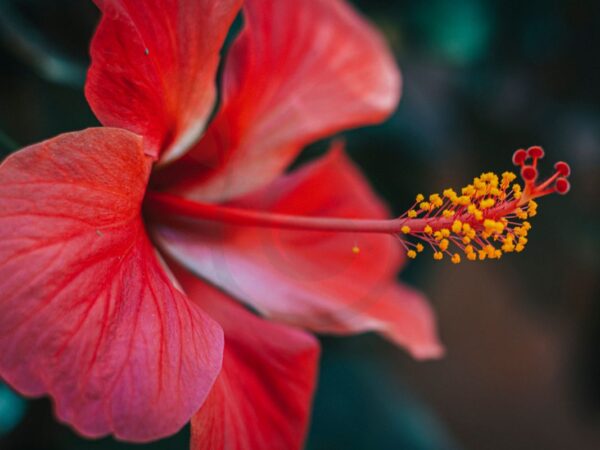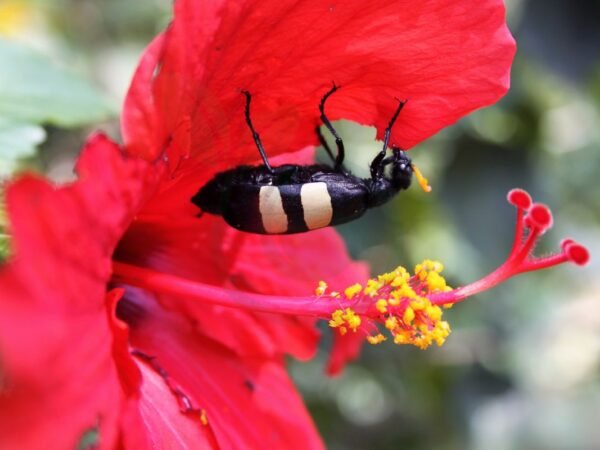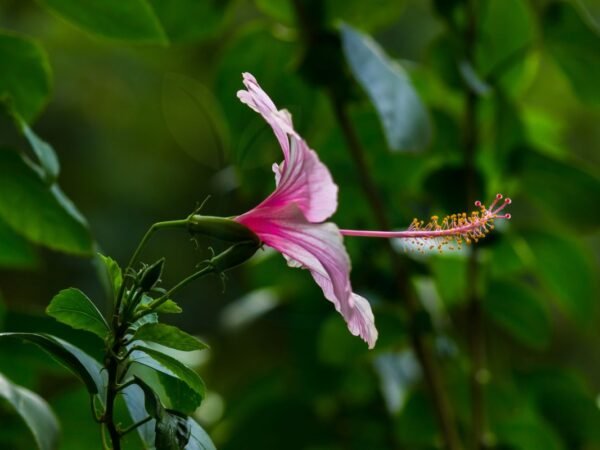Did you know that the timing of planting hibiscus seeds can significantly impact their growth and blooming? Knowing when to plant hibiscus seeds is crucial for a successful gardening experience.
When it comes to planting hibiscus seeds, timing is key. From the ideal season to the proper soil conditions, understanding the best practices can make all the difference in your garden's success. Stay tuned as we delve into the optimal times for planting hibiscus seeds and essential tips for nurturing these beautiful flowers to full bloom.
Key Takeaways
-
Plant Hibiscus Seeds at the Right Time: Ensure you plant hibiscus seeds during the optimal planting time to promote successful growth.
-
Proper Seed Preparation is Key: Prepare hibiscus seeds correctly before planting for better germination rates and healthier plants.
-
Consider Indoor Starting: Start hibiscus seeds indoors for a head start on the growing season and to protect them from external elements.
-
Follow Outdoor Sowing Guidelines: If planting hibiscus seeds outdoors, adhere to specific guidelines to maximize their chances of thriving in the garden.
-
Implement Effective Planting Techniques: Use recommended planting techniques to establish healthy root systems and encourage robust growth in hibiscus plants.
-
Monitor Growth Factors and Address Pest Issues: Regularly monitor growth factors like sunlight, water, and soil conditions while promptly addressing any common pest problems to ensure the well-being of your hibiscus plants.
Understanding Hibiscus
Seed Varieties
Hibiscus seeds come in various varieties, including tropical and hardy types, each with distinct characteristics. Tropical hibiscus seeds thrive in warm climates, while hardy varieties can withstand colder temperatures. When selecting seeds, consider the climate in your region to ensure successful growth.
It's essential to choose hibiscus seeds that align with your local climate conditions for optimal growth. Tropical hibiscus varieties require warm temperatures to flourish, making them ideal for regions with mild winters. On the other hand, hardy hibiscus seeds are suitable for areas with colder climates, as they can withstand frost and lower temperatures.
Growth Factors
Sunlight is crucial for hibiscus seed germination and growth. Ensure your plants receive at least six hours of direct sunlight daily for healthy development. Adequate watering is also essential; hibiscus plants prefer moist but well-drained soil. Avoid overwatering, as it can lead to root rot.
Proper fertilization is key to promoting robust growth in hibiscus plants. Use a balanced fertilizer with equal parts nitrogen, phosphorus, and potassium to support overall plant health. Regular pruning encourages new growth and enhances flowering. Prune dead or damaged branches to maintain plant vitality.
Hardy Types
Hardy hibiscus varieties are known for their resilience in colder climates, making them an excellent choice for gardeners in regions with harsh winters. These plants can survive temperatures as low as -30 degrees Fahrenheit (-34 degrees Celsius) when properly established. Hardy hibiscus plants typically bloom later in the season compared to tropical varieties.
When planting hardy hibiscus seeds, ensure they are placed in well-draining soil to prevent waterlogging during winter months. Mulching around the base of the plant helps insulate the roots and protect them from freezing temperatures. Regular watering is necessary during dry spells to maintain soil moisture levels.
Optimal Planting Time
Seasonal Guide
Hibiscus seeds should be planted in the spring for optimal growth. This timing allows the seeds to benefit from the longer daylight hours and warmer temperatures. Spring planting sets the hibiscus plants up for a strong start as they receive ample sunlight to thrive.
When planting hibiscus seeds in the spring, ensure that any threat of frost has passed. The soil temperature should be consistently above 60°F for successful germination. Avoid planting too early when the soil is still cold, as this can hinder seed germination and overall plant development.
Climate Impact
In regions with cooler climates, consider starting hibiscus seeds indoors before transplanting them outside. This method ensures that the plants have a head start and are better equipped to handle the outdoor conditions once they are moved. Indoor planting also protects the seeds from potential climate fluctuations, ensuring a higher success rate in germination.
For areas with hot climates, plant hibiscus seeds towards the end of winter or early spring. This timing allows the plants to establish themselves before the intense heat of summer kicks in. By planting strategically based on your climate, you give your hibiscus seeds the best chance to grow into healthy and vibrant plants.
Preparing Seeds
Selection Process
Selecting the right hibiscus seeds is crucial for successful planting. Look for seeds that are plump, firm, and free from any signs of damage or mold. Ensure they are fresh by checking the expiration date on the packet.
When choosing hibiscus seeds, opt for varieties that are well-suited to your climate and soil conditions. Consider factors like sunlight exposure and water requirements to ensure the seeds have the best chance of germination and growth.
Pre-planting Treatment
Before planting hibiscus seeds, it's essential to prepare them properly. Start by soaking the seeds in warm water for 24 hours to help soften the hard seed coat and improve germination rates.
After soaking, you can scarify the hibiscus seeds by gently rubbing them with sandpaper to further break down the seed coat. This process allows moisture to penetrate more easily, aiding in germination.
Indoor Starting Tips
Container Selection
When planting hibiscus seeds indoors, choose containers that are at least 4 inches deep. Opt for pots with drainage holes.
Select small containers to prevent overwatering and allow easy movement of seedlings when needed.
Consider using biodegradable pots, which can be planted directly into the ground without disturbing the roots.
Soil Preparation
Use a well-draining potting mix to ensure proper root development and prevent waterlogging issues.
Incorporate organic matter like compost to enrich the soil with essential nutrients for seedling growth.
Avoid heavy garden soil as it may lead to compaction, hindering seed germination and root expansion.
Outdoor Sowing Guide
Location Choice
When selecting a location in your garden to sow your hibiscus seeds, opt for an area that receives full sunlight. Hibiscus plants thrive in sunny spots, so choose a spot with at least six hours of direct sunlight daily. Ensure the location is sheltered from strong winds to prevent damage to the delicate seedlings.
Consider the temperature variations in your chosen spot. Hibiscus seeds require warm soil to germinate successfully. Aim for a location where the soil temperature remains consistently above 70 degrees Fahrenheit. Avoid areas prone to extreme temperature fluctuations, as this can hinder seed germination and plant growth.
Soil and Sunlight
Prepare the soil before sowing hibiscus seeds by ensuring it is well-draining and rich in organic matter. A loamy soil type works best for hibiscus plants, providing a balance of drainage and moisture retention. Incorporate compost or well-rotted manure into the soil to enhance its fertility and structure.
When sowing hibiscus seeds outdoors, ensure they are planted at the right depth. The ideal depth for hibiscus seeds is approximately 1/4 inch below the soil surface. Planting them too deep can delay germination or prevent it altogether. Water the newly sown seeds gently to avoid displacing them and maintain consistent moisture levels during the germination period.
Planting Techniques
Sowing Depth
Plant hibiscus seeds at a depth of 1/4 inch in well-draining soil for optimal growth. Ensure the soil is loose for easy root penetration.
For successful germination, maintain consistent moisture levels by lightly watering the seeds after planting. Avoid overwatering to prevent rotting.
Watering Needs
Hibiscus seeds require regular watering to keep the soil moist but not waterlogged. Provide water when the top inch of soil feels dry.
To establish healthy roots, water deeply and allow the soil to dry slightly between watering sessions. Consistent moisture is key for seedling development.
Growth Factors Consideration
Spacing Requirements
Hibiscus seeds should be planted at least 12 inches apart to allow ample room for growth. Providing adequate space between plants ensures they receive sufficient sunlight and nutrients.
To promote healthy root development, ensure the spacing between rows is about 3 feet in the garden. This distance helps prevent overcrowding, allowing each plant to thrive and flourish independently.
Planting hibiscus seeds too closely together can lead to competition for resources like water and sunlight, stunting their growth potential. Proper spacing is crucial for optimal plant health and vibrant blooms.
Soil Conditions
Well-draining soil is essential for hibiscus seed planting. The soil should be rich in organic matter, providing necessary nutrients for robust growth.
A soil pH level between 6.0 and 7.0 is ideal for hibiscus plants, ensuring they can efficiently absorb nutrients from the soil. Testing the soil before planting helps determine if any adjustments are needed.
Adding a layer of mulch around the base of hibiscus plants helps retain moisture in the soil and regulates temperature fluctuations. This creates a conducive environment for healthy root development and overall plant growth.
Common Pest Problems
Identification
Aphids: These small, pear-shaped insects can be green, yellow, black, or brown. They cluster on buds and new growth, sucking sap from the plant.
Whiteflies: Tiny, moth-like insects with white wings that fly around when disturbed. They feed on plant sap and excrete sticky honeydew.
Spider Mites: These arachnids are not insects but cause similar damage. They are tiny and often found in webs under leaves, causing stippling and discoloration.
Prevention Strategies
-
Natural Predators: Introduce beneficial insects like ladybugs or lacewings to control aphids and whiteflies.
-
Neem Oil: Apply neem oil as a natural pesticide to deter pests without harming beneficial insects.
-
Regular Inspection: Check the undersides of leaves for signs of pests regularly to catch infestations early.
-
Pruning: Remove heavily infested leaves or branches to prevent the spread of pests throughout the plant.
Maintenance and Care
Fertilization
Hibiscus plants benefit from fertilization to promote healthy growth and vibrant blooms. Use a balanced fertilizer with equal parts of nitrogen, phosphorus, and potassium. Apply the fertilizer every 4-6 weeks during the growing season for optimal results.
To fertilize effectively, sprinkle the fertilizer around the base of the plant, avoiding direct contact with the stem. Water thoroughly after fertilizing in the garden to help distribute nutrients into the soil. Over-fertilization can lead to excessive foliage growth, so follow the recommended dosage carefully.
Pruning Times
Pruning hibiscus plants is essential for maintaining their shape and encouraging new growth. The best time for pruning is in early spring before new growth begins. Remove any damaged or dead branches, as well as those that are crossing or rubbing against each other.
When pruning, use sharp and clean pruning shears to make precise cuts without causing damage to the plant. Aim to create an open and airy structure that allows sunlight to reach all parts of the plant. Regular pruning also helps prevent disease and encourages more abundant flowering.
Final Remarks
Now that you have a comprehensive understanding of planting hibiscus seeds, from optimal timing to growth factors and pest management, you are well-equipped to embark on this rewarding gardening journey. By following the indoor starting tips and outdoor sowing guide provided, you can ensure the successful growth of your hibiscus plants. Remember to pay attention to maintenance and care routines to foster healthy and vibrant blooms.
Take action today by applying these insights and techniques to plant your hibiscus seeds confidently. Share your newfound knowledge with fellow gardening enthusiasts and continue to expand your skills in nurturing beautiful hibiscus plants. Your commitment to learning and implementing best practices will undoubtedly yield a colorful and flourishing garden for you to enjoy.
Frequently Asked Questions
When is the best time to plant hibiscus seeds?
The optimal time to plant hibiscus seeds is in the early spring when the weather starts to warm up. This allows the seeds to germinate and establish before the full heat of summer arrives.
How should I prepare hibiscus seeds for planting?
To prepare hibiscus seeds, soak them in warm water for 24 hours before planting. This process helps soften the seed coat and improves germination rates. Make sure to use well-draining soil and keep the seeds moist but not waterlogged.
Can I start hibiscus seeds indoors?
Yes, you can start hibiscus seeds indoors. Use a seed-starting mix in small pots or trays, place the seeds on top of the soil, and lightly cover them. Keep the soil consistently moist and provide warmth and light for germination.
What are some common pest problems that affect hibiscus plants?
Common pests that can affect hibiscus plants include aphids, spider mites, whiteflies, and scale insects. Regularly inspect your plants for any signs of infestation such as yellowing leaves, sticky residue, or webbing, and take appropriate measures to control these pests.
How should I care for my hibiscus plants after planting?
After planting hibiscus seeds, provide them with regular watering, sunlight, and fertilization. Prune dead or damaged branches to encourage healthy growth. Monitor for pests and diseases regularly and address any issues promptly to ensure your hibiscus plants thrive.
Image Source: Paid image from CANVA




